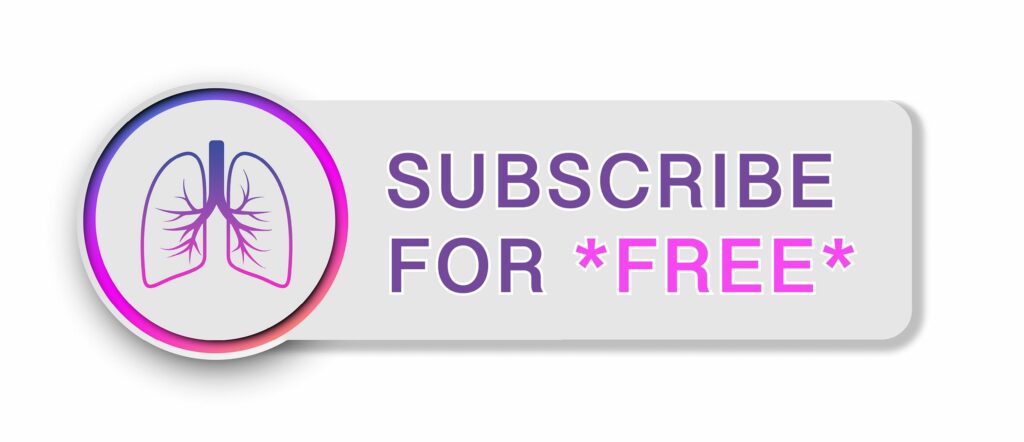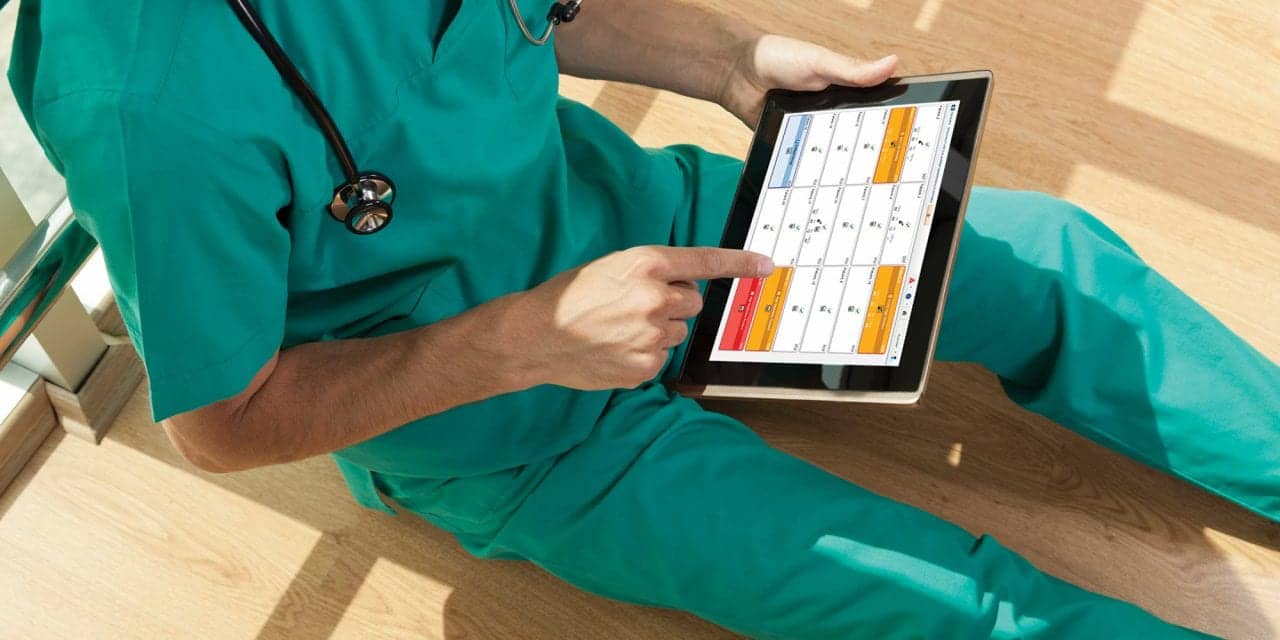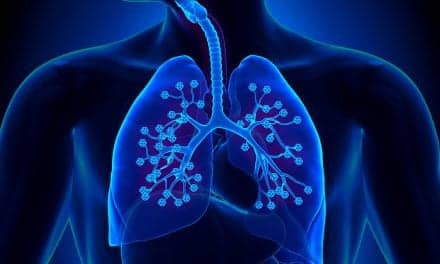New patient monitoring and ventilator analytics systems are improving the ability of respiratory care teams to remotely track vital signs for multiple ventilated patients while strengthening safety practices, VAE/VAP reporting, and hospital data integration.
By Karen Appold
Today’s newest offerings in patient monitoring and ventilator analytics technologies are a win-win for clinicians, hospitals, and patients. Since November 2011, San Diego-based CareFusion has offered the Respiratory Knowledge Portal, a software application that collects and analyzes data from CareFusion ventilators in a unit or across an entire hospital or health system.

“This analytics and reporting tool enables hospitals to measure clinical and process variability in ventilator therapy by providing actionable information to help improve patient care,” said Leonard Mulkowsky, RRT, clinical product manager. “Reporting capabilities focus on ventilator weaning, lung protective strategies, and alarm policy compliance.”
As of May 2013, by using an app feature that was added to the Knowledge Portal, the portal is also capable of automating the surveillance of ventilator associated conditions (VACs) to help hospitals comply with the Centers for Disease Control and Prevention’s new ventilator associated events (VAE) surveillance and reporting requirements.
According to Rupal Ayer, MBA, senior global marketing manager, Covidien, Boulder, Colo, the company has always excelled in rich clinical data generation from platforms such as its Puritan Bennett line of ventilators and Nellcor pulse oximeters.
“While clinicians loved this, their focus is not on data but active patient care,” he said. “Consequently, we believed we had a responsibility to go beyond data generation and create a tool that removed boundaries for clinicians and liberated data from the bedside, essentially changing the patient care paradigm from point of care to point of need. The tool would need to help clinicians provide better active patient care.”
Available since October 2013, Covidien’s Vital Sync VPMP enables clinicians to remotely access streaming patient information from multiple device categories on any web-enabled device.
“While Vital Sync connects to Covidien’s ventilators, capnographs, and pulse oximeters today, our intent is for Vital Sync to make available the critical real-time information that our customers need to make effective, informed clinical decisions,” Ayer said. “As the Vital Sync system is being deployed in different areas of care across the country, high acuity settings are especially finding value with Vital Sync—specifically from a patient safety and clinician efficiency lens.”
Vital Sync was actually designed by Covidien’s clinicians and built by its IT department to be an evolving scalable software-based solution whose subscription model is hospital budget friendly.
OPUS-CriticalCare, by Theronyx, Thousand Oaks, Calif, is a browser-based comprehensive ventilator and alarm management system that assists physicians, RTs, and nurses to manage, validate, and improve ventilator weaning practices.
“The system enables clinicians to improve outcomes and define best weaning practices while reducing a patient’s time on the ventilator,” said Jon W. Bowerbank, chairman and founder of Theronyx. “As a result, the patient spends less time in the ICU, providing significant clinical cost savings to the hospital.”
The application is web-based and can be accessed from any mobile location on any browser-enabled device with authorized and secure access rights, including tablets and smartphones. The system’s display dashboards can be customized to view any relevant ventilator data as well as patient data from the electronic health record (EHR).
When used in critical care environments, OPUS-CriticalCare guides the therapist through the weaning process on a predefined schedule based on current hospital weaning protocols and practices built into the system. The system’s branching logic next step recommendations help accelerate the weaning process, which reduces a patient’s time on a ventilator and opens up much needed critical care beds for the hospital.
“The system really drives smart medicine to the bedside and allows for more intelligent decision-making,” Bowerbank said.
Improving Compliance with Best Practices
In particular, improving compliance with best practices is a significant feature of all three systems. CareFusion’s Respiratory Knowledge Portal provides information based on thresholds and markers, which make clinicians aware of protocol anomalies in an easy-to-read format. It collects ventilator data and patient information in the hospital, which is then sent to a hosted data center where hospitals can configure thresholds for the events they want to measure.
“This enables the data to be mined and creates markers when hospital-defined thresholds are exceeded,” Mulkowsky explained. “All of this can be migrated into reports accessible by any department via a secure login from any Internet-enabled workstation or mobile device.”
One example of how the Respiratory Knowledge Portal can help to reduce clinical process variability is through weaning analytics. A primary concern of respiratory clinicians is removing patients from a ventilator at the earliest possible moment. In addition, the costs of mechanical ventilation can be as much as $2,200 a day for the first 96 hours and $3,900 a day after that, Mulkowsky said.
Typically, a ventilated patient will spend more than twice as long in the intensive care unit—6.9 days versus 2.9 days for patients breathing on their own. But without visibility into clinical process variability, a hospital will not be able to measure or improve its weaning practices.
“Better adherence to protocols and improvements in operational efficiency are the avenues to reducing the duration and cost of ventilator therapy,” Mulkowsky said. The Respiratory Knowledge Portal can obtain the necessary visibility into actual practices and see where these diverged from best practices.
One hospital using the system found that excess time between the ready-to-wean marker and the first spontaneous breathing trial could be attributed to the physician practice of rounding and writing weaning orders only in the morning.
“While the hospital was making changes to this practice to create additional opportunities for trials outside of these peak times, the staff also implemented changes to have more patients ready for those tests in the morning so that weaning could begin shortly thereafter,” Mulkowsky noted.
This hospital saw a tremendous improvement. In just 4 months, the time from the first ready-to-wean marker to the first spontaneous breathing trial was cut in half.
According to Ayer, some hospitals have credited Vital Sync with slowing patient escalation to higher acuity settings or even saving lives. “Vital Sync VPMP enables clinicians to detect clinical distress remotely so they can respond faster to the changing needs of patients,” Ayer explained. “A typical scenario involves clinical decisions needing to be made in an evolving and complex ecosystem. Our clinicians are not at the bedside every second, so they are thrilled to have access to waveforms, parameters, alarms, pressure-volume loops, and trends wherever and whenever they need them.” Now when clinicians get a 3 am phone call from the bedside, the resulting conversation becomes that much more clinically powerful.
Another scenario specific to the ICU is enabling a collaborating clinician with remote access to a patient’s ventilator information to make timely and informed recommendations that allow the patient to avoid unnecessary sedation, potentially yielding an earlier extubation and discharge. This streaming, rich, high fidelity, comprehensive set of information is not accessible on the electronic medical record (EMR), by phone, or outside of the hospital.
By providing remote access to alarms and patient information from bedside devices, Vital Sync VPMP can help clinicians prioritize patient care so they can work more efficiently when they are away from the bedside.
In addition, Ayer says Vital Sync’s ability to provide electronic administrative devices and patient reports along with immediate notifications of device setting changes provides clinicians with a foundation to increase efficiency.
Meanwhile, OPUS-CriticalCare’s technology enhances the accuracy of vent check and weaning trial documentation by capturing user-defined ventilator and EHR data in real time. The system provides the configurable option to capture and track breath data in real time and as an average, mean, and median data value. “It provides physician notification of weaning achievement and other key ventilation management events,” Bowerbank said.
Physicians and other clinicians are given remote access to real-time patient-specific ventilator parameters, including waveforms and flow/volume loops. Patient-specific weaning trial history is also remotely accessible, with historical data displayed in a flowsheet view for easy comparison of data.
VAE/VAP Reporting Features
Mulkowsky believes that one of the best features of the Respiratory Knowledge Portal is its VAE application. In January 2013, the National Healthcare Safety Network within the CDC rolled out new, more objective standards and definitions to track and report VAE, including ventilator-associated pneumonia (VAP). “The VAE application uses these new definitions to monitor and report all VAEs and can provide near real-time indicators when a VAE is likely to occur in the next 24 to 48 hours if there is no clinical intervention or improvements in the patient’s FiO2 or PEEP setting thresholds,” he said.
The VAE application automates the collection of ventilator data by tracking each ventilator patient’s minimum daily FiO2 and PEEP settings and trends them per the CDC-derived algorithm. Then, the VAE application runs the data through the new VAE definition algorithm. The prevailing data points for the algorithm are 2 days of stability of daily minimum levels of PEEP and FiO2, followed by a period of worsening oxygenation and increased ventilator support.
“Using the VAE application, it becomes simple to see when changes to these variables occurred or met the reporting threshold of significance, allowing for interventions before a VAC occurs,” Mulkowsky said. “For many hospitals, this is the first time they can use data and reporting to be proactive versus retrospective in patient care.”
Unlike most patient monitoring systems, Vital Sync VPMP is a software-based solution that is constantly evolving every 4 to 6 months. Newer versions are passed on to existing customers via automated updates. In 2013, Covidien introduced newer versions that had incremental device connectivity, features, and reports at each release.
“We have worked closely with the CDC guidelines on VAE reporting and offer an easy-to-use and robust electronic VAC report on Vital Sync,” Ayer noted. This report, which monitors, tracks, and highlights ventilator patients who have had 2 days of stability followed by worsening levels of FiO2 and PEEP, meets the CDC’s VAC requirements and provides clinicians with an electronic report. “Now our clinicians can focus on patient care instead of performing time-consuming manual patient audits.”
OPUS-CriticalCare allows users to customize the tracking and analysis of patient vital signs. The software automatically monitors, documents, and provides alerts for key infection control events such as the automatic capture and tracking of critical data for VAE events. “The system identifies a trigger point and sends alerts to a number of key stakeholders. All this happens behind the scenes. No one person needs to take an active role,” said Bowerbank.
Integrating with IT/Data Systems
Interconnectivity is a key feature of today’s monitoring and surveillance systems. The Respiratory Knowledge Portal is built on a modern standards-based platform that complies with requirements that most IT departments use for deployment, security, and support for interface engines designed to support medical device connectivity. The platform collects ventilator data and patient information in the hospital, which is then sent to the hosted data center. The system is capable of interoperability with electronic health records and can send information to the EHR.
A key component of the system is the CareFusion Coordination Engine (CCE). “This interface engine is the common platform for connecting all CareFusion device families,” Mulkowsky said. “If a hospital already has the CCE for CareFusion’s infusion pumps or medication dispensing technologies, the same platform is used for ventilator data collection and interoperability. The Respiratory Knowledge Portal is based upon a proven and successful platform from its dispensing and infusion platforms.”
At a macro level, Vital Sync VPMP wirelessly transmits patient information from Covidien bedside devices to the hospital server, where the Vital Sync software sits. In particular, chief information officers have been very receptive to this deployment model as hospital IT departments have full control over Vital Sync, meaning the security protocols and HIPAA (Health Insurance Portability and Accountability Act) considerations woven into a hospital’s server are also enjoyed by Vital Sync.
Once the data is in Vital Sync, it allows clinicians remote access to this information on any web-enabled device and also configures this data into an HL7 protocol, writing it into the hospital’s EMR. Vital Sync VPMP is a scalable software-based solution that has wide device connectivity with ventilators, capnographs, and pulse oximeters. It also offers wide hospital infrastructure connectivity, as it can be connected to any EMR, clinical information system, admit discharge transfer (ADT) system, or alarm forwarding system.
“The biggest potential for Vital Sync is fully virtualizing the bedside, giving clinicians a powerful tool in active patient care,” Ayer concluded.
There is a low implementation impact to RT and IT departments when it comes to OPUS-CriticalCare. Project implementation, including data integration, typically requires less than one part-time resource, according to Bowerbank.
While compatible with most ventilator hardware, Theronyx performs much of its software development around the SERVO-i ventilator by MAQUET Medical Systems USA. “The system integrates seamlessly to most mechanical ventilators and all hospital EHR systems using HL7 integration technology,” he explained. It also supports inbound ADT information and bi-directional clinical data to and from the EHR.
Ease of Use
Meanwhile, the Respiratory Knowledge Portal passively receives both ventilator and ADT data. There is never any need to manually log into the portal to initiate the flow of data into the portal’s database. As a hosted application, users don’t have to install software on a desktop, laptop, tablet, or smartphone hardware. All that’s needed is network connectivity and a valid user name and secured password.
“The Knowledge Portal provides analytic data on ventilator patients and can help easily identify variances from best practices to help provide focus on where clinicians can make improvements to their practice,” Mulkowsky added. “This approach can help to reduce the time patients spend on mechanical ventilation and assist in reducing the rate of reportable VAE.”
Utilizing automation for documentation and data analysis, OPUS-CriticalCare was designed with RTs in mind.
“The system reduces variability in clinician to clinician skill levels,” according to Bowerbank, who added that all clinicians practice at the same level of competency with regard to any vent weaning protocol as determined by the hospital. The system’s automated monitoring capabilities help take away the manual process of tracking and entering ventilator data and eliminate the potential for errors and omissions by clinicians.
In addition, Theronyx markets the product as a “service subscription package,” Bowerbank said, which allows hospitals more affordability. A monthly operational fee includes operational costs, initial implementation, interfacing, training, and upgrades. There is an initial 36-month contract associated with the system.
The platform integrates with most ventilator models on the market, meaning “Hospitals can confidently and successfully address all of their ventilator management needs and requirements with one fully integrated software solution,” Bowerbank said.
“It’s a much easier way for hospitals to invest in the technology. They don’t have to budget for capital expenses. Plus it’s all-inclusive, there are no hidden costs [for software upgrades]. We want hospitals to have access to the latest and greatest technology.”
RT
Karen Appold is a contributing writer for RT Magazine. For further information, contact [email protected].









